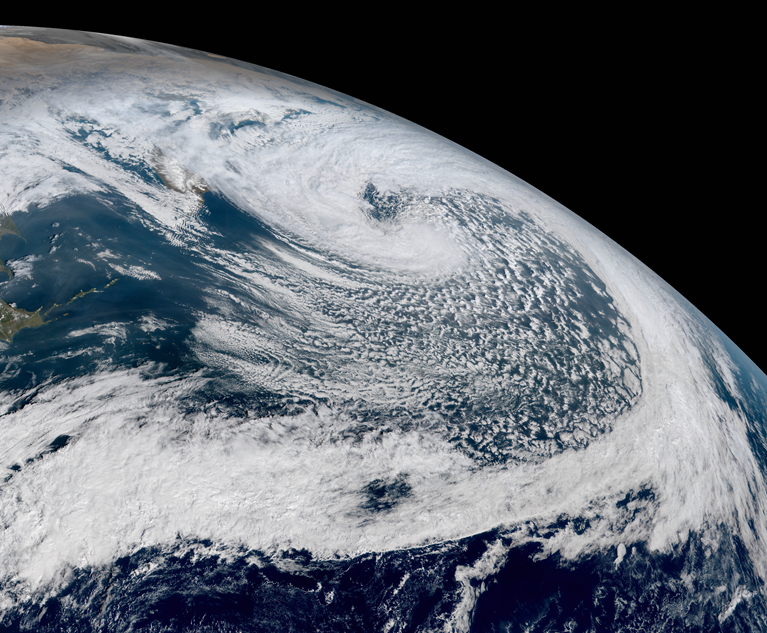 An explosive cyclogenesis rapid deepening of an extratropical cyclonic low-pressure area. These dangerous storms also are referred to as bomb cyclones, weather bombs, meteorological bombs, and or a bombogenesis. This photo from 2017 illustrates such a storm developing over the Pacific Ocean. (Credit: Japan Meteorological Agency/Wikipedia Commons)
An explosive cyclogenesis rapid deepening of an extratropical cyclonic low-pressure area. These dangerous storms also are referred to as bomb cyclones, weather bombs, meteorological bombs, and or a bombogenesis. This photo from 2017 illustrates such a storm developing over the Pacific Ocean. (Credit: Japan Meteorological Agency/Wikipedia Commons)
A windstorm generally needs four factors to mushroom into a "bomb cyclone," or explosive cyclogenesis: Low pressure, strong temperature change, rapid intensification, and plenty of water.
Recommended For You
Want to continue reading?
Become a Free PropertyCasualty360 Digital Reader
Your access to unlimited PropertyCasualty360 content isn’t changing.
Once you are an ALM digital member, you’ll receive:
- Breaking insurance news and analysis, on-site and via our newsletters and custom alerts
- Weekly Insurance Speak podcast featuring exclusive interviews with industry leaders
- Educational webcasts, white papers, and ebooks from industry thought leaders
- Critical converage of the employee benefits and financial advisory markets on our other ALM sites, BenefitsPRO and ThinkAdvisor
Already have an account? Sign In Now
© Touchpoint Markets, All Rights Reserved. Request academic re-use from www.copyright.com. All other uses, submit a request to [email protected]. For more inforrmation visit Asset & Logo Licensing.







